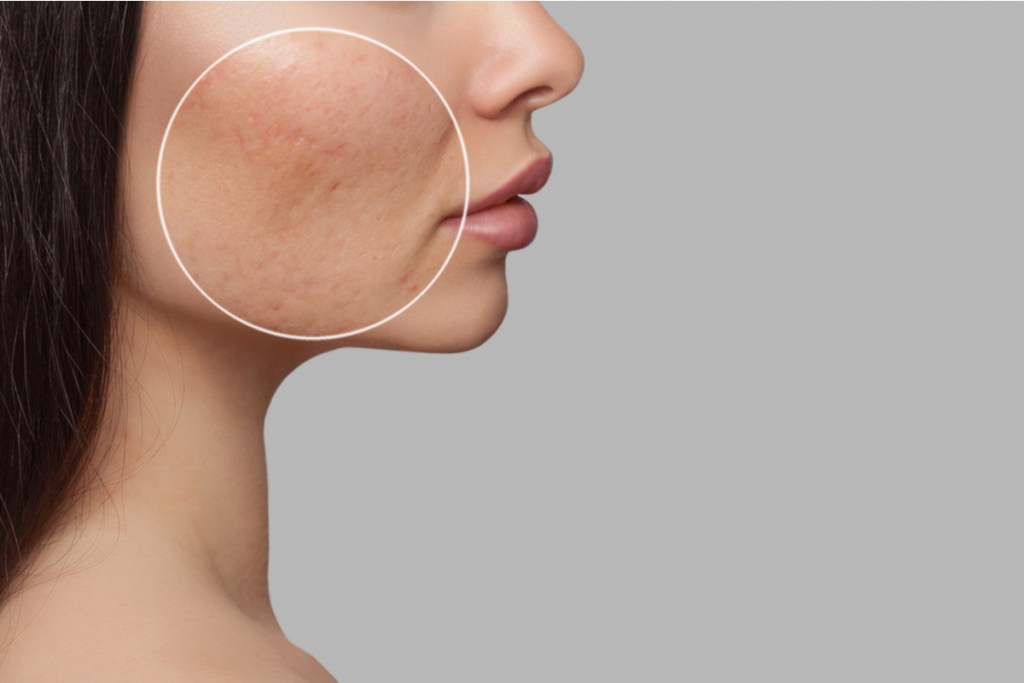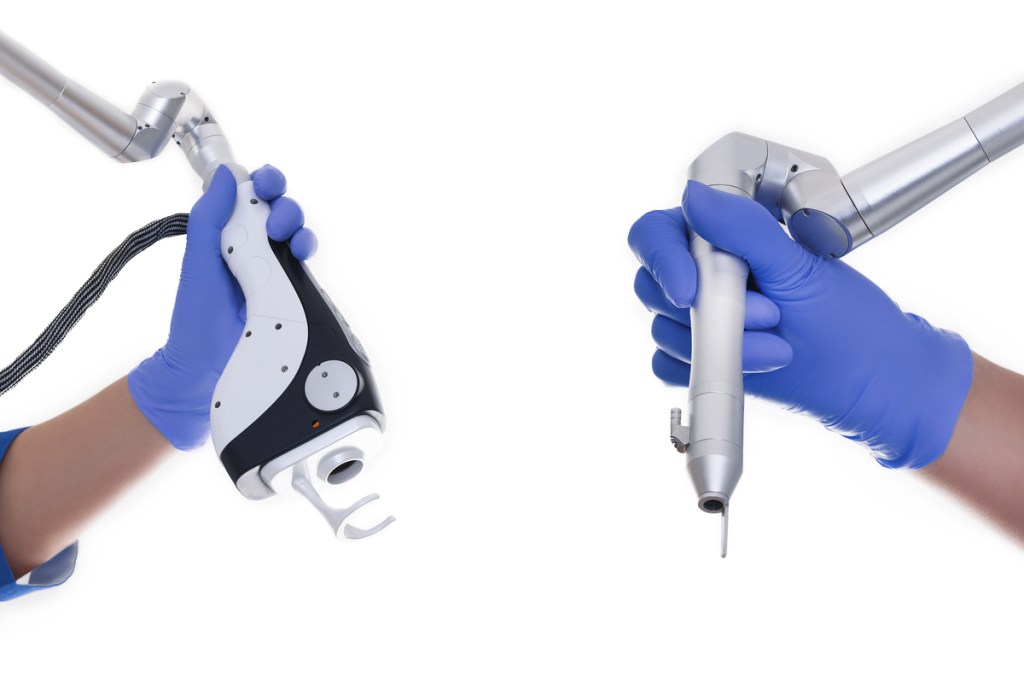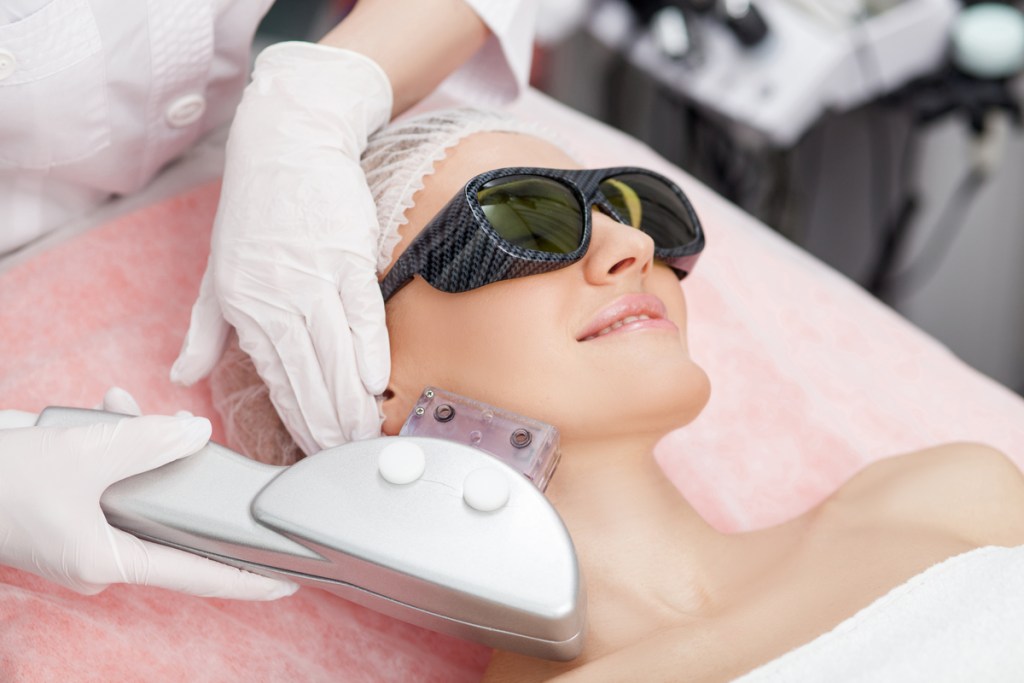When you look in the mirror and see age spots, sun spots, old acne scars, lines, sagging skin, and wrinkles — don’t panic. There are quite a few ways you can go about trying to smooth out the texture and appearance of your skin, including laser resurfacing.
We all want that dewy, radiant, glow from within and even tone to our skin, but is resurfacing right for you? Let’s check out the ins and outs and see if you are a good candidate for this light show.

How it works
Laser skin resurfacing is carried out by a certified cosmetic surgeon who will use a laser to target damaged skin cells.
There are two types of treatment. Ablative treatment is more intensive and removes the outer layer of aged or sun-damaged skin. These treatments are used to address fine to moderate wrinkles, age spots, uneven skin tone, sun-damaged skin and acne and chickenpox scars.
Non-ablative treatment works by heating the underlying tissue — without affecting the surface — to promote the growth of collagen. This less-invasive procedure is used to improve skin texture and tone and may be employed to improve fine lines and pigmentation issues.
Is laser skin resurfacing safe?
Laser skin resurfacing is generally considered a safe and effective procedure for improving the appearance and texture of the skin. This cosmetic treatment involves using a laser to remove damaged outer layers of skin, stimulating collagen production and promoting the growth of new, healthier skin cells. While individual experiences may vary, there are several factors that contribute to the overall safety of laser skin resurfacing.
Firstly, advancements in laser technology have led to more precise and targeted treatments, reducing the risk of complications. Laser devices used for skin resurfacing are often equipped with sophisticated controls, allowing medical professionals to adjust the intensity and depth of the treatment to match each patient’s unique needs.
Secondly, the procedure is typically performed by experienced dermatologists or plastic surgeons who have undergone specialized training. These professionals have a comprehensive understanding of the skin’s structure and can tailor the treatment to minimize risks and maximize results. Prior to the procedure, a thorough evaluation of the patient’s skin type, medical history, and expectations is conducted to ensure suitability and safety.
Furthermore, laser skin resurfacing is a non-invasive or minimally invasive procedure, depending on the specific technique used. This means that it requires little to no incisions, reducing the risk of infection and scarring. However, it is important to note that temporary side effects such as redness, swelling, and mild discomfort are common after the procedure, but they typically subside within a few days or weeks.
As with any medical procedure, there are potential risks and complications associated with laser skin resurfacing, such as hyperpigmentation, hypopigmentation, or rare occurrences of infection or scarring. However, these risks can be minimized by choosing a qualified professional, following post-treatment care instructions diligently, and maintaining open communication with the healthcare provider throughout the process.
Overall, when performed by skilled professionals using modern laser technology, laser skin resurfacing is generally considered safe. However, it is essential to consult with a qualified healthcare provider to determine the suitability of the procedure for individual circumstances and to discuss potential risks and benefits.
You may need a recovery time
Laser treatment technically isn’t surgery, but many people require healing time. Depending upon your skin’s response and the extent of your treatment, it could take up to three weeks for your skin to heal. You may experience peeling, swelling, rawness, and extreme redness. Recovery time depends upon:
- What kind of laser is used — there are five types
- The intensity of the treatment you receive
- Your age and fitness level
- How you normally heal and recover
Extra skincare
During the healing and treatment process, you will need to pay special attention to your skin. After-care can include dressing changes and you may need to take an antibiotic if you have any complications.
The most important thing to remember is to avoid the sun. You can’t be in the sun while you are going through treatments and you will need to monitor your sun exposure for up to a year after your treatment. Using sunscreen with SPF 30 or above is mandatory.
In addition, you will need to avoid:
- Saunas
- Hot showers
- Sun
- Smoking
- Over-the-counter drugs

What will it cost?
Laser skin resurfacing comes with considerable cost. Because it is considered cosmetic surgery, treatment is not covered by most health insurances. Sessions can cost from $1,400 to $2,400 not including associated expenses. It is best to consult with your practitioner about the total cost of treatment.
Who are the best candidates?
Laser surfacing is effective on any skin tone. While some lasers come with a higher risk of cell damage or discoloration for those with darker skin, an experienced certified specialist should be able to advise on the best treatment to minimize adverse outcomes.
That being said, a physician may advise against laser resurfacing if:
- You scar easily
- Are pregnant or nursing
- Have taken prescription acne medicine in the last year
- Have a poor or weakened immune system

Side effects
As with any treatment, side effects are possible. You may experience bumps, a rash, swelling, redness, discoloration, or a burning sensation. Follow your doctor’s instructions to reduce the possibility of any of these side effects.
How long does it last?
The results of laser resurfacing should last for several years, especially if you are vigilant about protecting yourself from the sun. But skin is a living organism — new wrinkles and pigmentation will form and it will continue to be susceptible to the ravages of the environment. At some point, you may want to consider resurfacing again. The best way to delay additional treatment is to protect your skin. The better you take care of your skin, the longer the results of resurfacing will last.
BlissMark provides information regarding health, wellness, and beauty. The information within this article is not intended to be medical advice. Before starting any diet or exercise routine, consult your physician. If you don’t have a primary care physician, the United States Health & Human Services department has a free online tool that can help you locate a clinic in your area. We are not medical professionals, have not verified or vetted any programs, and in no way intend our content to be anything more than informative and inspiring.



